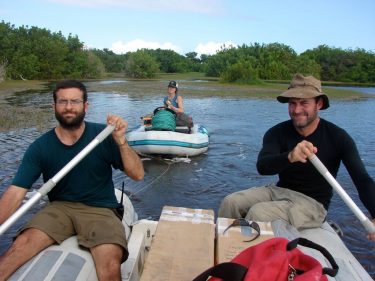
University of Washington oceanographers used clues from the Galapagos Islands — a dot in the middle of the Pacific Ocean — to trace El Niño patterns and seasonal tropical rains over the past 2,000 years. Evidence shows shifts that last for centuries, suggesting these tropical climate patterns have varied more radically and for longer durations than previously believed.
The study is published the week of March 14 in the Proceedings of the National Academy of Sciences.
“This is one of the most representative records of precipitation changes in the eastern Pacific, and it goes a good way toward explaining seasonal tropical rain band and El Niño dynamics,” said first author Daniel Nelson, who did the research for his UW doctorate in oceanography.
“We want to understand not just if precipitation has changed in the past, but why,” he added. “If we can understand the mechanisms that caused these changes, then we can better predict how precipitation might change in the future.”
Read more at UW Today »
